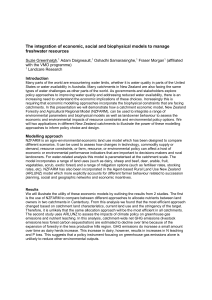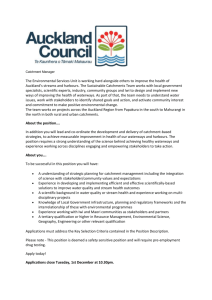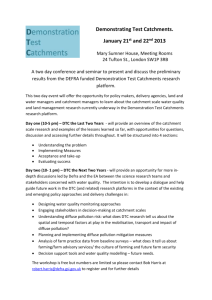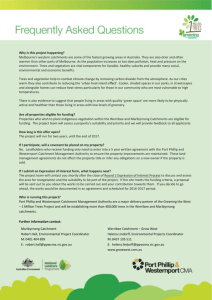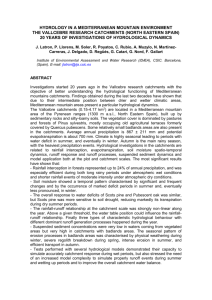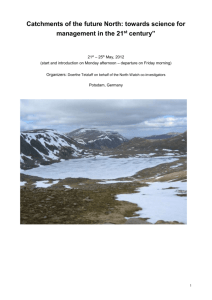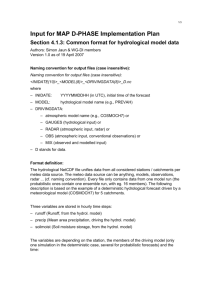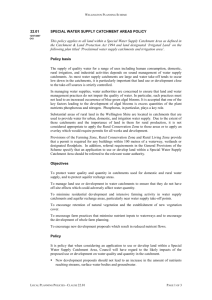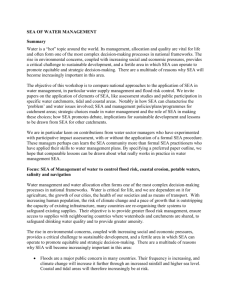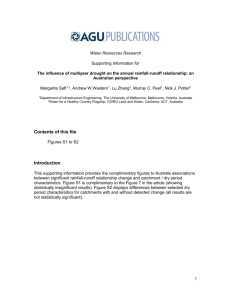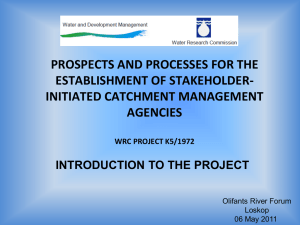regionalisation
advertisement
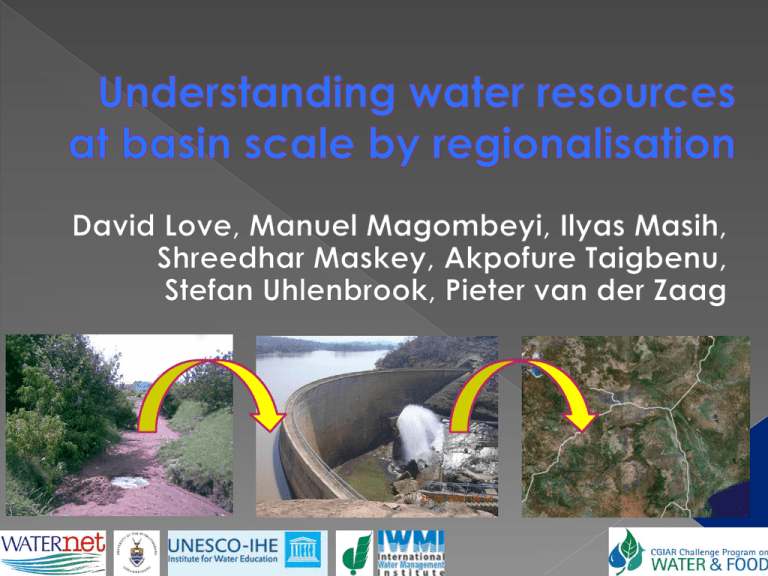
Regionalisation transferring small-scale (or meso-scale) measurements to a large scale (or basin or regional) model Transferring from gauged catchments to ungauged catchments Calibrate model against control catchments or long time series Catchment classification for regionalisation (i) To regionalise three selected models in three semi-arid secondary river basins (ii) To compare the benefits and weaknesses of the selected models in the semi-arid environment Flow duration curves Compare groups of FDCs using non- parametric Kolmogorov-Smirnov test Catchment characteristics multivariate statistical classification of catchments based on biophysical descriptors (discriminant analysis) determine relationships between biophysical descriptors and hydrological parameters Discriminant analysis Confirmed statistically differences between Region IV and Region V Flow duration curves Confirmed statistically differences between sub-perennial and (sub-)ephemeral catchment groups Did not confirm independence of ephemeral catchment groups Calibration: 60% CNS > 0.3 Regionalisation partially successful: 40% CNS > 0.3 Model performance best at 10 d Parameter sets that performed best: slow infiltration and percolation, moderate to fast “overland” flow, less “baseflow” Mutangi Sub-perennial catchments simulated well Successfully calibrated HDAM Degraded catchments simulated poorly Proportion degraded land correlated to K0, fast “overland” flow component B72H B72A Calibrated in B72E, B72F, B72G Critical parameters were › baseflow alpha factor › curve number › soil evaporation compensation › soil available water capacity Correlation coefficient 0.56 Correlation coefficient for calibration of whole sub-catchment B72H: 0.51 Application to ungauged B72A Based on geographical area spatial proximity shape of the flow duration curve (FDC) SWAT regionalisation, Olifants Basin SWAT application, Karkheh & Mzingwane HBV application, Mzingwane & Olifants HBVx application, Karkheh & Olifants Challenge Program on Water and Food: PN17 and PN57 International Foundation for Science (DL) Echel Eau Foundation (MM) International Water Management Institute (IM) Rand Water (MM) Ministry of Energy, Meteorological Organization and Agricultural Research and Extension Organization of Iran Department of Environment and Water Affairs of South Africa Department of Meteorological Services and Zimbabwe National Water Authority of Zimbabwe
